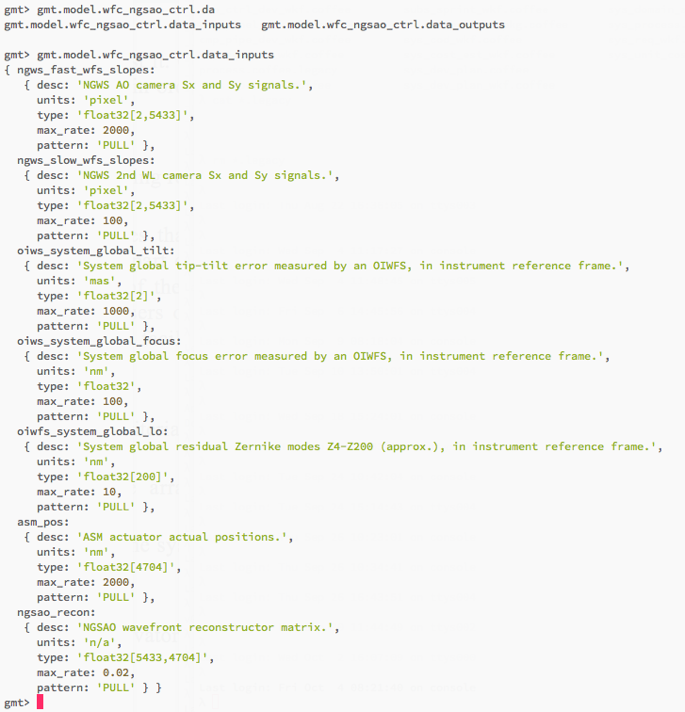6.2.2. Command Execution Service#
The Command Line Interface (CLI) complements the graphic user interfaces used for both engineering and operations. It provides low-level access to all the system functionality, and the flexibility often required during testing and commissioning phases. CLI also provides a way to operate subsystems in early stages of development, when the UI is still being developed and does not provide all the functionality.
The figure below shows a screenshot of the CLI interface used to navigate the GMT semantic model. More specifically, it shows command-line completion (first line) and component introspection (fourth line). The CLI allows scoped name completion and component introspection. Alias and shortcuts can be defined to facilitate user interaction.

Fig. 6.4 Command-line Service. Example of command line completion (first line) and component introspection (fourth line)#
Service Capabilities
The Command Line Interface components provide the following capabilities:
Access to the public interface of any distributed component
Advanced debugging and troubleshooting
Command completion and introspection enables interactive discovery of the system functionality at runtime
Support for development and test automation
Interactive shell command (gmt command)
Access to on-line documentation, introspection and model and metamodel semantics.
Scripting
Batch processing (gds “gmt development system” command)
Alias definition to minimize typing long command names and reducing typing errors.
Service Deployment
The Command Line Interface can be executed in any of the operation consoles on the observatory control network. Given the distributed nature of the project it may often be useful to grant access to the CLI tool from the operation network so subsystems experts can diagnose a fault condition. For safety reasons, CLI sessions in the operation network should only be granted specific authorization levels.